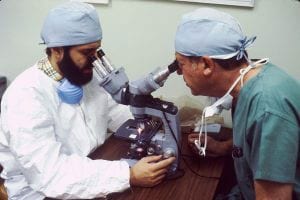By: Erin Santos-Primis, Mom to Isabella and Executive Director of the Isabella Santos Foundation
Starting a nonprofit in honor of a loved one lost to a tragic disease is often a grieving family’s way of finding purpose. It offers a sense of action, a distraction and the hope that it can contribute to finding a cure or at least provide some relief – a way to channel pain into progress. I know because that’s where I was 17 years ago.
The Isabella Santos Foundation (ISF) was born while my daughter Isabella was in the fight of her life. Even as she battled neuroblastoma, she actively raised money for other kids she met in the hospital. Our mission was clear: to make a direct impact on patients and their families. We didn’t need a cure to feel progress; we needed a clear focus. In our first year, we set out to raise $10,000.
Nearly 18 years later, Isabella would have been approaching her 20th birthday. She passed away at the tender age of seven, and ISF has since raised over $14 million to advance research for rare pediatric cancers and support programs for families enduring this nightmare at every part of their journey.
Despite our growth, we find ourselves in what I call the “messy middle” of the fundraising landscape. This is where many family-run nonprofits often reside, raising between $2 million and $6 million annually. It’s a challenging space–not grassroots enough to attract local enthusiasm and not large enough to command the respect and attention of major healthcare institutions or make significant strides in funding clinical trials.
In this middle ground, we face distinct challenges. Hospitals frequently press us for general funds, often prioritizing staffing needs over targeted research initiatives. Unlike more common cancers, rare pediatric cancers lack a powerful umbrella organization like the Leukemia & Lymphoma Society (LLS) to drive widespread change. This leaves us to navigate the complex funding landscape largely on our own, seeking opportunities and collaborators with limited guidance or support.
Additionally, nonprofits in this “messy middle” tend to operate independently. Collaboration is rare, as each organization strives to establish its identity and focus on specific cancers. The competition for limited donors who “care about rare” often prevents these groups from uniting to amplify their impact. As a neuroblastoma parent, I’ve had to set aside personal biases to do what’s best for the broader rare cancer community through our work at the Isabella Santos Foundation. More organizations in this space need to adopt a similar mindset, recognizing that pooling resources and efforts can lead to greater advancements across multiple rare cancers.
The harsh reality is that clinical trials and basic science research are prohibitively expensive. As mid-sized nonprofits, we are often excluded from meaningful participation in these areas. Yet, in the rare pediatric cancer space, the greatest opportunities for innovation exist because traditional options are limited and risks are necessary. New treatments are born out of this urgency.
As we recognize Pediatric Cancer Awareness Month this September, I urge organizations and donors to recognize the untapped potential within the rare cancer community. Rare diseases collectively affect one in ten people, with more than half being children. While some childhood cancers, like leukemia, have seen remarkable improvements in survival rates, rare pediatric cancers remain drastically underfunded and overlooked.
We must support all pediatric cancers and that the 5% diagnosed with rare forms aren’t left behind. By providing a united front, we can drive the innovation needed to discover life-saving treatments. Nonprofits in the “messy middle” hold the keys to great advancements precisely because we have no choice but to fight harder and smarter.
This Pediatric Cancer Awareness Month, let’s unite. Rare diseases—and rare-focused nonprofits—aren’t so rare when we stand together. We hold the power to lift others up and make meaningful strides in the fight against pediatric cancer. Together, we can provide hope where it seems most out of reach and make a profound difference in the lives of those affected by rare pediatric cancers.
Editor’s Note: Chronic conditions and rare diseases don’t discriminate, Patient Worthy and its partners are interested in amplifying the voices of those from all identities and backgrounds. If you have a journey to share, reach out to learn more about how your voice can help spread awareness and inspire individuals from all walks of life.







